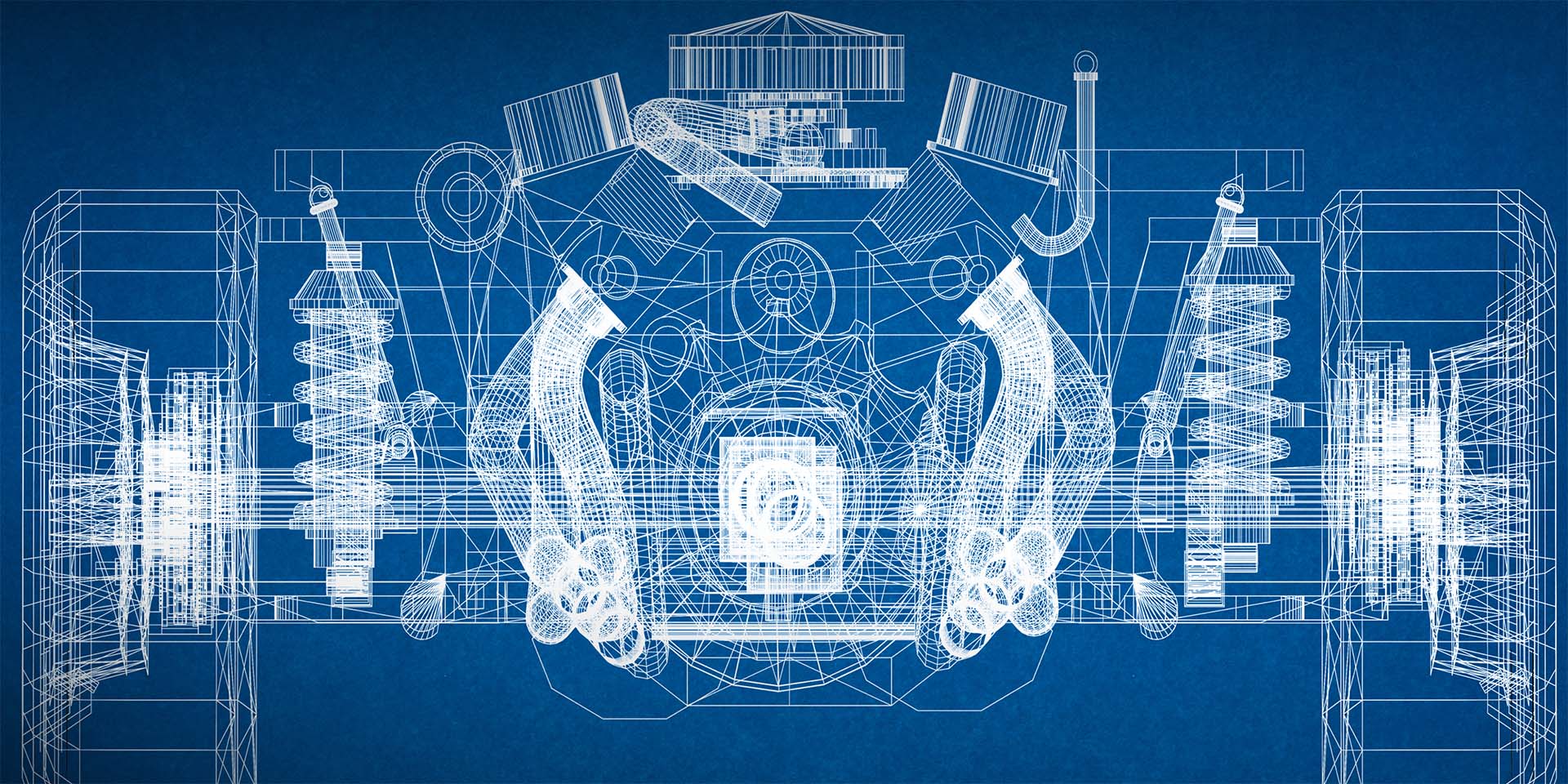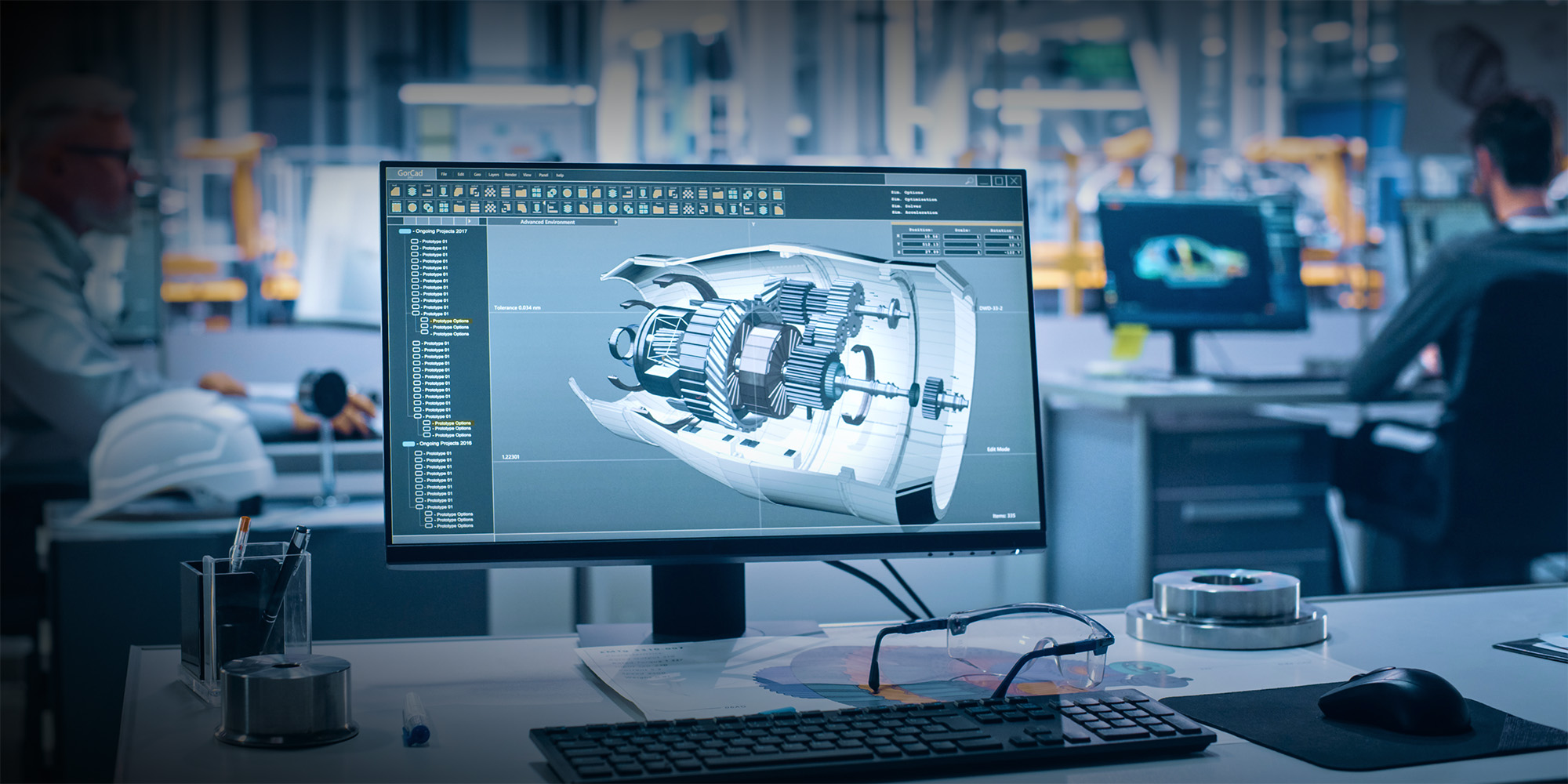
Dorian Derežić - 14/02/2024 | 15 min read
SpaceTime Research and Development Automotive
The automotive industry, like many others, is in a state of rapid transformation.

With a growing emphasis on connectivity, efficiency, and sustainability, the demands placed on Research and Development (R&D) departments have never been greater.
Today's consumers expect vehicles that are not just reliable, but also packed with innovative features that make driving more comfortable, safer, and more environmentally friendly.
To meet these demands, the R&D process needs to be more sophisticated and agile. Traditional approaches are gradually being enhanced with advanced data analysis tools, allowing OEMs to explore more design variations, detect issues, and accelerate development cycles.
These data-driven methods bring a higher degree of accuracy, predictability, and efficiency to the R&D process, making it an indispensable tool for contemporary automotive development.
Enter Mireo SpaceTime, a spatio-temporal data platform designed to enhance the way automotive R&D departments conduct analyis on hundreds of thousands or even millions of vehicles once they're on the roads – or more specifically, conduct both qualitative and quantitative analysis of how different car components perform over time and in different environments. SpaceTime provides fast and easy access to relevant spatio-temporal data, which can be leveraged to explore new features, optimize performance, and evaluate different driving scenarios.
At its core, SpaceTime is driven by the belief that the key to successful R&D lies in the ability to harness and analyze real-world data efficiently. By offering an innovative way to tap into the wealth of data generated by connected vehicles, SpaceTime paves the way for deeper insights, and ultimately, superior vehicle performance.
In this blog, we'll delve deeper into how SpaceTime can be used to reshape component analysis in automotive R&D and explore its business and technical advantages. So get ready for a journey into the future of automotive development!
Component analysis is the pillar of modern R&D, and that is especially true in the automotive industry, where the stakes of innovation, performance, and safety are high. It is a cost-effective and time-efficient approach to gathering data which can can be used to guide new product development or improve existing ones.
The increasingly intricate technological landscape of the automotive industry, marked by trends like autonomous driving, electrification and connectivity, further underscores the importance of component analysis. Mireo SpaceTime's advanced data gathering, processing and visualization capabilities provide automotive OEMs with a trove of insights from real-world usage and help them to keep the pace with technological advancements and stay competitive.
Spatio-temporal data, which details an object's change in position over time, can capture a wealth of information including a vehicle's speed, acceleration, route, and more, under varying conditions.
SpaceTime's proficiency in capturing and processing spatio-temporal data allows OEMs to incorporate these insights as key sources of truth into their R&D processes. These detailed insights can reveal nuances like the impact of aggressive driving on engine wear or the effect of different traffic conditions on fuel efficiency, influencing design and engineering decisions to enhance safety and performance.
Traditional methods of data analysis can struggle to cope with the scale and complexity of modern automotive R&D. The sheer volume of data involved can be challenging to manage and slow to process. Moreover, integrating disparate data sources can be technologically demanding.
SpaceTime is designed to address these challenges head-on. Its robust architecture allows it to handle vast data sets with ease, while its seamless integration capabilities ensure that all relevant data feeds into OEMs existing data management platforms. With SpaceTime, OEMs can surmount the limitations of traditional methods, harnessing the full power of their data.
The correlation between data accuracy and successful R&D outcomes cannot be overstated as it leads to better quality products reaching the market.
SpaceTime contributes significantly to enhancing the overall R&D process. With its swift access to relevant spatio-temporal data, and the power to process it efficiently, it provides OEMs with detailed insights needed to inform product development strategies – steering R&D decisions in the right direction and contributing to the creation of superior vehicles. By harnessing the power of SpaceTime, OEMs are better equipped to meet and exceed customer expectations, bolstering their position in the competitive automotive market.

In the intricate dance of R&D, SpaceTime plays the role of an enabler of effective and efficient component analysis. Its sophisticated data management capabilities offer a transformative approach to this critical aspect of product development. Let's explore how!
Time and accuracy are the two cornerstones of successful R&D. Achieving this begins with quick, yet targeted access to data. In the automotive industry, component analysis often relies heavily on spatio-temporal data, such as a vehicle's location over time, its speed, acceleration, or deceleration in different environments and conditions.
SpaceTime's superior data architecture facilitates rapid data retrieval, minimizing the time spent in data pre-processing. This is achieved through SpaceTime's innovative indexing and search algorithms, which allow it to find and retrieve the necessary spatio-temporal data among terabytes of data within a second.
This means less time waiting for data and more time for data analysis. Fast data access coupled with the accuracy of SpaceTime’s data retrieval can lead to more efficient processes, better insights, and ultimately, superior automotive designs and systems.
Performance optimization is a critical phase in the R&D process, as it can determine the success or failure of an automotive innovation. Here, the reliability of gathered data is paramount.
With SpaceTime, automotive OEMs can harness real-world, accurate, comprehensive datasets from millions of vehicles. And by assessing a component's performance in a real-world environment, developers can easily spot areas areas for advancement that can guide their future product releases.
SpaceTime doesn't stop at analyzing components in real-world usage – it takes a step further with predictive analytics. By analyzing spatio-temporal data patterns from real-world usage, SpaceTime can help OEMs to predict the outcomes of different scenarios.
For instance, if an OEM is in the process of testing a new braking system, predictive analytics supported by data gathered and analyzed with SpaceTime can help determine how the system will behave under different circumstances. This predictive power extends to a range of applications – from anticipating component wear and tear to estimating a vehicle's energy consumption under different driving conditions.
In essence, by integrating real-world data into predictive analytics processes, SpaceTime allows automotive OEMs to look beyond what is, and towards what could be. This foresight can be invaluable in the fast-paced, competitive world of automotive R&D, where being one step ahead can make all the difference.
Through its unparalleled capabilities in data handling and predictive analysis, SpaceTime is transforming automotive R&D, enabling OEMs to drive innovation, optimize efficiency, and mitigate risk. In a landscape as dynamic and competitive as the automotive industry, tools like SpaceTime can prove to be powerful allies in staying ahead of the curve.

As SpaceTime enhances vehicle analysis in real-world usage, it brings with it an array of business benefits. Let's delve deeper into these!
When it comes to R&D, speed and efficiency are crucial. With the enormous volume of data generated by modern vehicles, the process of gathering, cleaning, and processing this data can be time-consuming. By providing fast access to relevant spatio-temporal data, SpaceTime significantly reduces this time. This speed is made possible through the use of advanced algorithms and data processing techniques that efficiently filter and retrieve the most relevant data from vast databases.
Moreover, faster data access also equates to faster iteration in the R&D process. Instead of waiting for prolonged periods for data to be ready, production teams can start analyzing component performance almost immediately. In this way, the speed of data access can drastically shorten the R&D cycle, leading to considerable cost savings.
SpaceTime’s ability to effectively gather and analyze real-world data from millions of vehicles allows for unprecedented insights into vehicle performance under various conditions. With real-world data forming the basis of simulations, the value of the insights derived is greatly improved.
Detailed insights into component performance provided by SpaceTime allow automotive companies to pinpoint potential issues and areas for improvement. For instance, with SpaceTime gathering data from hundreds of thousands or even millions of vehicles, engineers can easily understand how a vehicle's various components might perform under stress in a variety of different environments and usage scenarios.
Insights gathered with the help of SpaceTime can enable engineers to monitor the wear and tear of components over time, helping them understand how durability and performance might be affected. This way, companies can take informed measures to enhance product quality and reliability, thereby strengthening their brand reputation and building trust with customers.
The fast-evolving nature of the automotive industry requires companies to constantly innovate and adapt. SpaceTime's advanced data gathering, analysis and visualization capabilities enable companies to make informed business decisions, anticipate future trends and tackle challenges head on - helping them to stay ahead of the curve.
This proactive approach to R&D can help companies future-proof their products, ensuring their relevance and competitiveness in the long run.
Beyond the direct benefits to the R&D process, SpaceTime also offers clear strategic advantages to OEMs. Because companies that can bring reliable, innovative products to market faster have a clear competitive edge.
Through accelerated R&D cycles, improved product quality, and effective risk mitigation, SpaceTime helps companies translate these operational efficiencies into strategic advantages. For instance, companies that are able to launch innovative features faster can capture a larger market share and enhance their brand reputation. In this way, the benefits of SpaceTime extend beyond R&D, influencing broader business outcomes and contributing to long-term success.

In today's fast-paced, technology-driven world, competitive advantage often hinges on the ability to harness and use data effectively. This is particularly true in the realm of automotive Research & Development (R&D), where data forms the basis of everything from design choices to safety measures. SpaceTime, with its advanced spatio-temporal capabilities, is designed to optimize and streamline the data-intensive processes in R&D.
Data is the lifeblood of any relevant analysis. In the context of automotive R&D, this data is often varied, encompassing everything from vehicle telematics to environmental factors. Efficiently managing this large-scale, high-velocity data is crucial for effective component analysis.
SpaceTime shines in this regard. It is designed to handle big data, offering a robust and high-performance solution to manage vast amounts of spatio-temporal data. Its advanced data management capabilities, powered by its proprietary database design, provide high-speed access to granular data points. By reducing the time spent on data management, R&D teams can focus more on their core tasks – innovating and optimizing products.
SpaceTime can seamlessly integrate with existing systems in the R&D landscape, allowing for a smooth transition and minimizing disruptions to ongoing operations. Whether it's CAD software, data analytics platforms, or custom-built systems, SpaceTime can interact with a wide range of tools, enhancing their capabilities by providing real-time, spatio-temporal data access.
This interoperability boosts the efficiency of R&D operations and reduces the complexities associated with the integration of new technologies.
The flexible architecture of SpaceTime makes it a scalable and adaptable solution for R&D needs. As your requirements grow or evolve, SpaceTime can scale its operations effortlessly, ensuring that your R&D processes are not hindered by data infrastructure limitations.
Its adaptability ensures it can handle new types of data or changes in data structure, providing a future-proof solution for your R&D data needs.
Through advanced automation capabilities, SpaceTime can significantly improve your processes. It can automate data retrieval, preprocessing and analysis, saving valuable time and reducing the risk of manual errors. These automated processes are also customizable, ensuring that you have the right data at the right time for your specific needs.
Moreover, SpaceTime's advanced analytics capabilities can help identify patterns and anomalies in real-time providing immediate insights! This feature enables an iterative approach to R&D, where insights derived can be quickly applied, improving the overall efficiency and outcomes of the process.
At the core of SpaceTime are a few key technical innovations that make it a powerhouse for R&D. Its spatio-temporal database is designed to efficiently store and process large-scale geospatial and time data, and its advanced analytics capabilities are powered by machine learning algorithms.
Additionally, SpaceTime offers robust data visualization tools that make it easy to understand complex results. By integrating these technical advancements, SpaceTime provides a comprehensive platform for efficient and effective component analysis in automotive R&D.
The automotive industry is poised on the cusp of a revolution, with digital transformation reshaping every aspect from design to delivery. At the heart of this change is the modern R&D department, leveraging cutting-edge tools for advanced data analysis – and the need for platforms that can manage and manipulate vast volumes of spatio-temporal data swiftly and accurately is paramount.
In the near future, we can expect an even greater reliance on tools like SpaceTime, as companies strive to accelerate their R&D processes, improve product quality, mitigate risks, and stay ahead of the curve!
SpaceTime is more than just a tool – it's a game-changer that empowers automakers to reimagine the boundaries of what's possible in R&D. With its ability to provide fast access to relevant spatio-temporal data, SpaceTime can serve as a catalyst for advanced performance optimization, risk analysis, and problem-solving - all in a scalable and adaptable framework that integrates seamlessly with existing R&D systems.
From accelerating the R&D process and improving product quality, to mitigating risks and fostering innovation, the benefits of SpaceTime are manifold. And as we've explored in this blog, these advantages extend across both business and technical domains, making SpaceTime an indispensable asset in the automotive R&D landscape.
As we continue to move into a future where data is the fuel driving innovation, solutions like SpaceTime will only grow in importance. By harnessing the power of spatio-temporal data for enhanced component analysis, automotive OEMs can not only optimize their present operations but also pave the way for the breakthroughs of tomorrow.